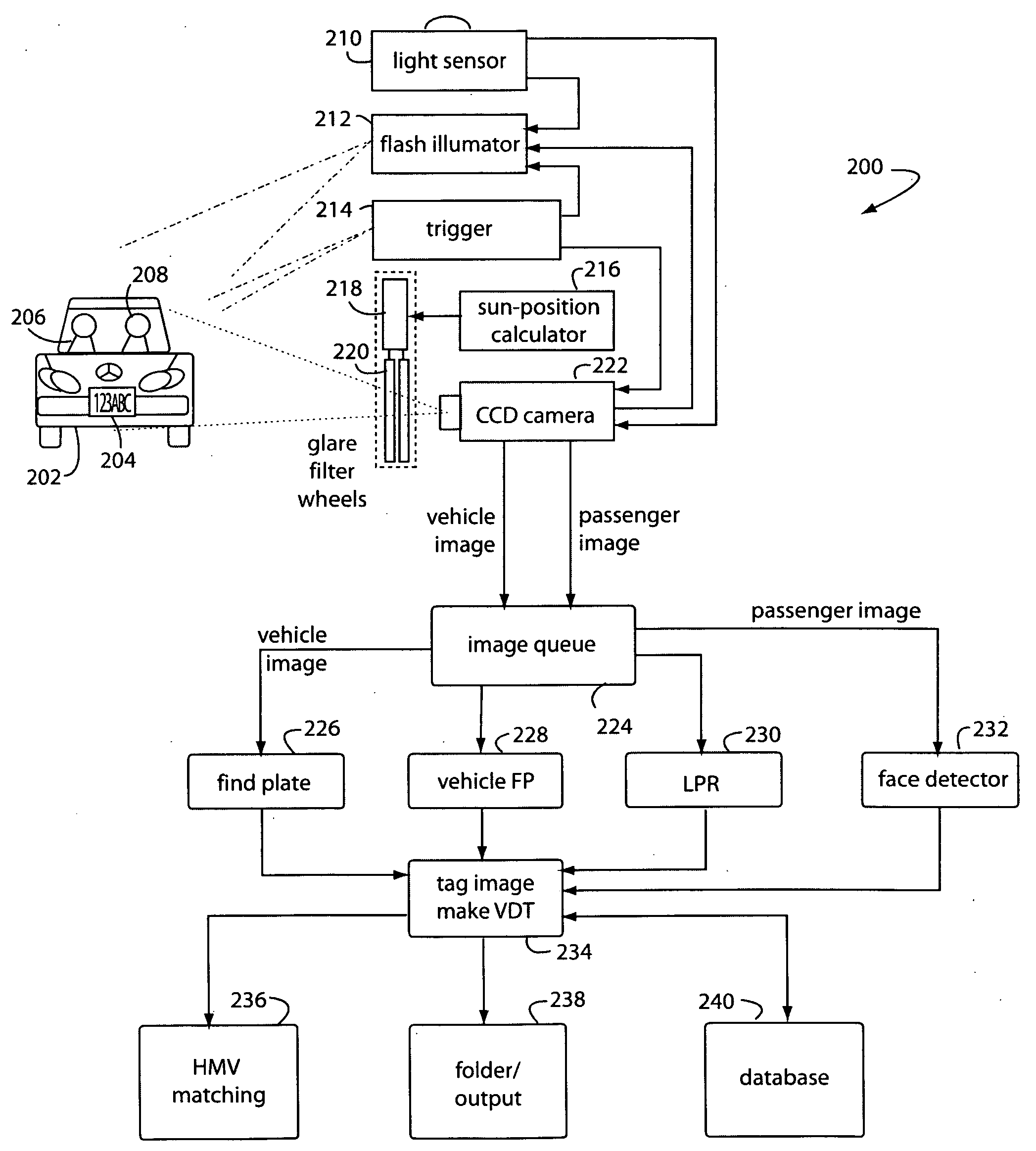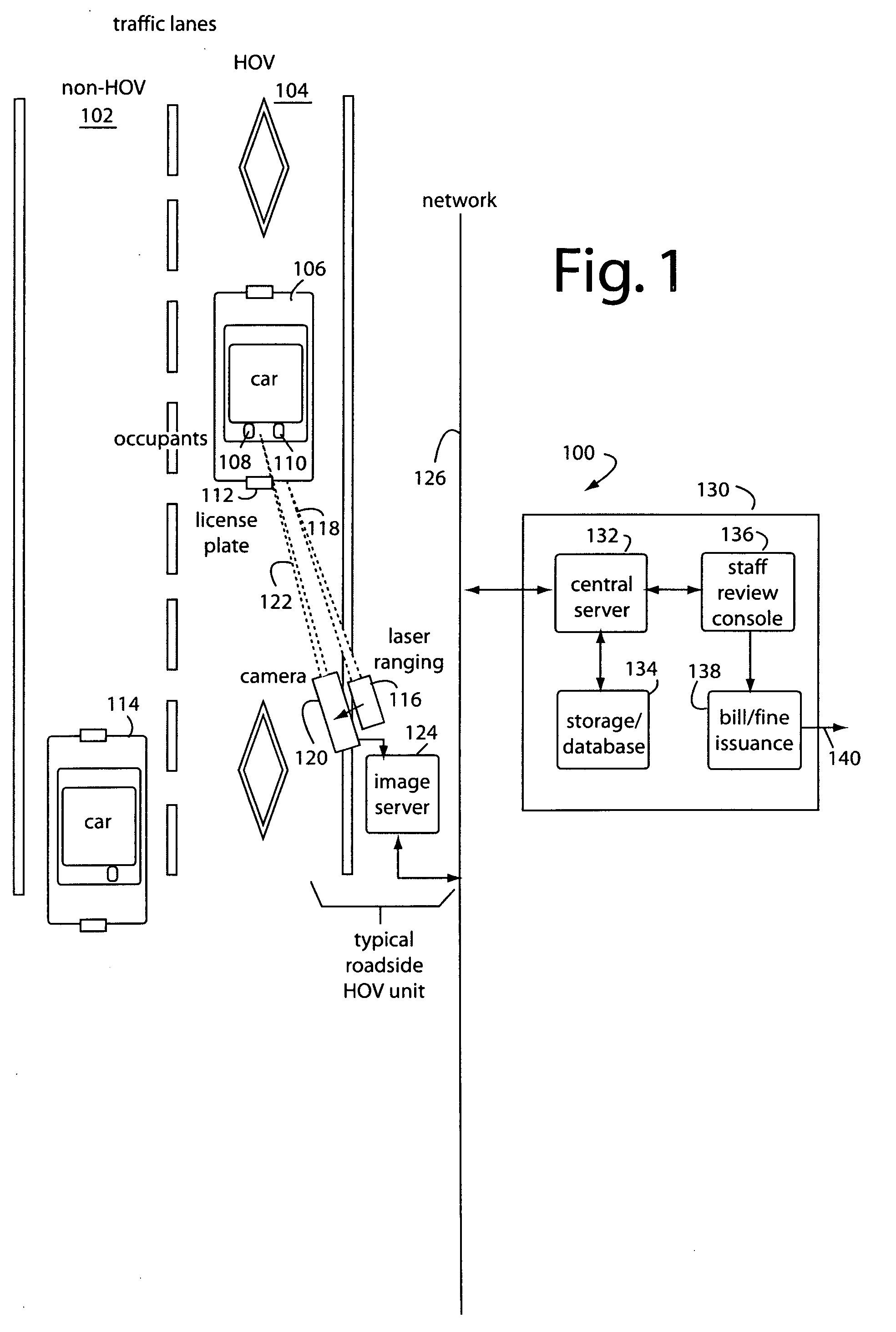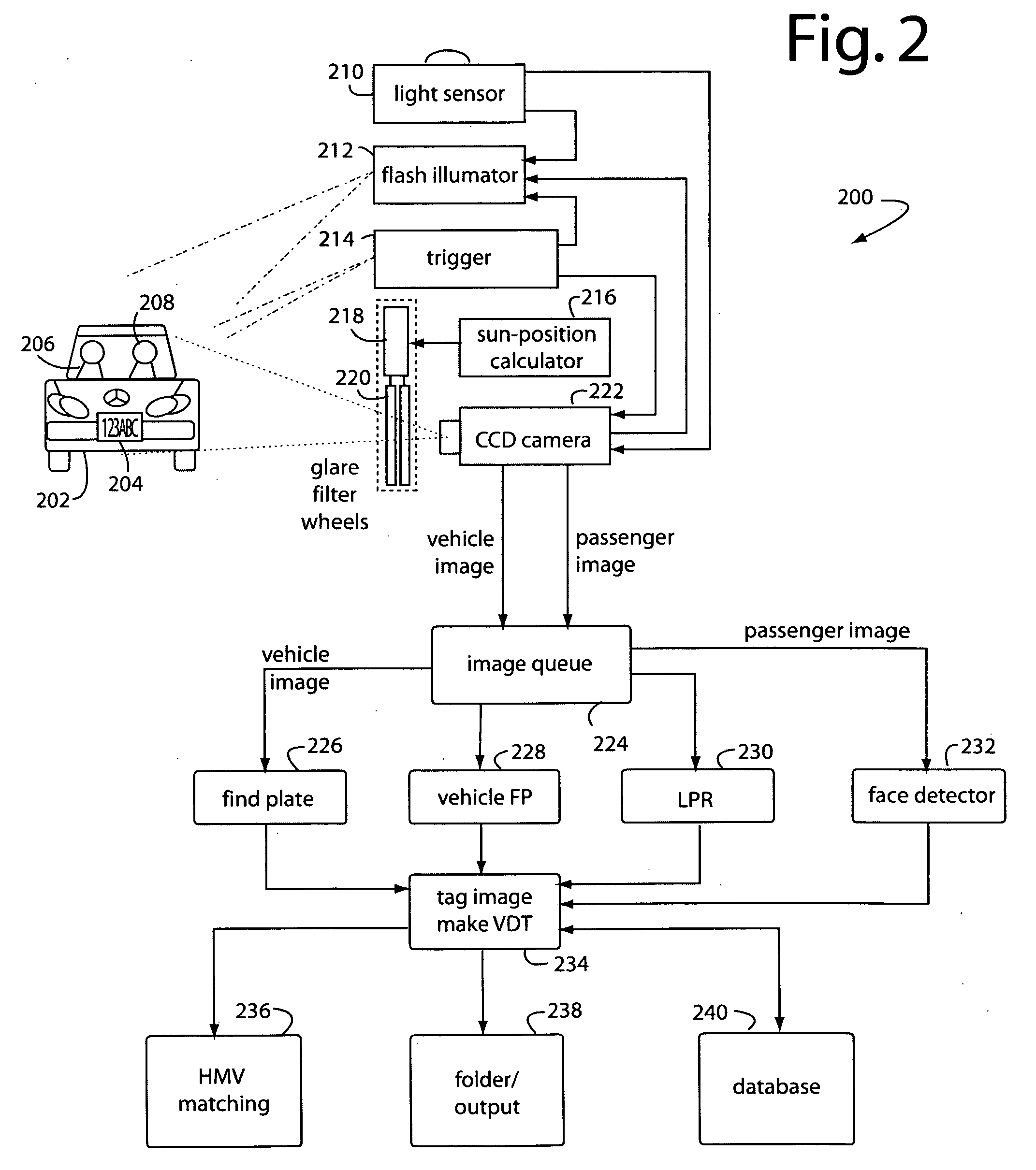High occupancy vehicle (HOV) lane enforcement
a high-occupancy vehicle and lane enforcement technology, applied in the direction of controlling traffic signals, instruments, computing, etc., can solve the problems of deteriorating traffic flow, high-speed pursuit in lanes adjacent to stop-and-go traffic, and other costs of hov lane enforcement, so as to achieve the effect of reducing labor costs
- Summary
- Abstract
- Description
- Claims
- Application Information
AI Technical Summary
Benefits of technology
Problems solved by technology
Method used
Image
Examples
Embodiment Construction
[0015]FIG. 1 represents an HOV enforcement system embodiment of the present invention, and is referred to herein by the general reference numeral 100. For example, a highway includes a non-HOV lane 102 and an HOV lane 104. Legal use of the HOV lane 104 requires a car 106 to have at least two occupants 108 and 110, and a front license plate 112. A car 114 is of no interest because it is not traveling in the HOV lane 104. A laser ranging device 116 sends a laser beam 118 that detects when a car is within range of an associated video camera 120. The camera is triggered to take its images at the appropriate times. An optical image 122 includes the faces of occupants 108 and 110, as viewed through the windshield, and a license plate 112. If any additional occupants are visible inside car 106, their images too will be captured and recorded by an image server 124. Advanced signal processing is used to account for rain water on the road or car windshield, night conditions, and adverse posit...
PUM
 Login to View More
Login to View More Abstract
Description
Claims
Application Information
 Login to View More
Login to View More - R&D
- Intellectual Property
- Life Sciences
- Materials
- Tech Scout
- Unparalleled Data Quality
- Higher Quality Content
- 60% Fewer Hallucinations
Browse by: Latest US Patents, China's latest patents, Technical Efficacy Thesaurus, Application Domain, Technology Topic, Popular Technical Reports.
© 2025 PatSnap. All rights reserved.Legal|Privacy policy|Modern Slavery Act Transparency Statement|Sitemap|About US| Contact US: help@patsnap.com



